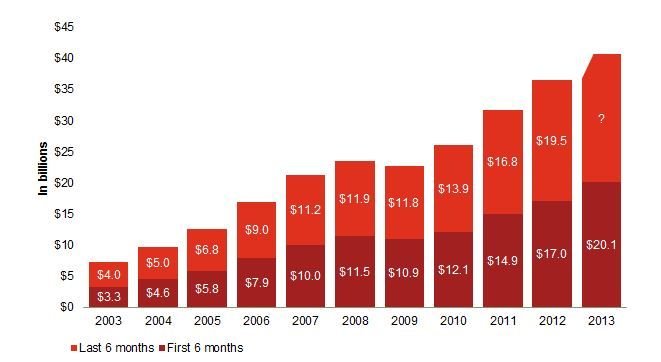
Business Revenue Models in E commerce In today’s digital age, e-commerce is thriving, with businesses of all sizes moving online to reach a global audience. However, for an online store to succeed, it’s not enough just to have a website and products. Understanding and choosing the right business revenue model is critical for sustainability and growth. In this blog, we’ll dive deep into various revenue models used in e-commerce, discuss how they work, and explore which might be the best fit for different types of businesses.
What Is a Business Revenue Model of Business Revenue Models in E commerce
A revenue model is essentially the strategy a company uses to generate income. For e-commerce businesses, the revenue model defines how the company will earn money from its website and operations. This could be through selling products, offering services, running ads, or even subscription-based services.
Choosing the right revenue model can make a massive difference in a company’s profitability and long-term success. Let’s explore some of the most common revenue models in e-commerce.
1. Product-Based Revenue Model of Business Revenue Models in E commerce
The product-based revenue model is the most traditional form of e-commerce. In this model, businesses sell physical or digital products directly to customers through their website or marketplace platforms like Amazon or Etsy.
Key Features:
- Direct sales to customers.
- May involve manufacturing, sourcing, or dropshipping.
- Includes one-time purchases and occasional repeat customers.
Examples:
- Amazon and Etsy are prime examples of product-based e-commerce, where sellers list items for sale, and customers purchase them directly from the platform.
Pros:
- Simplicity: This model is straightforward. You sell products, and customers buy them.
- Scalability: Businesses can easily scale by adding more products to their inventory or expanding into new markets.
Cons:
- High competition: Standing out in crowded markets can be tough.
- Profit margins: Depending on the sourcing method, profit margins can be slim, especially when factoring in shipping and handling costs.
2. Subscription-Based Revenue Model
The subscription-based model has gained popularity in recent years, particularly for businesses offering recurring products or services. Business Revenue Models in E commerce In this model, customers pay a recurring fee, typically monthly or annually, in exchange for continued access to products or services.
Key Features:
- Customers pay on a recurring basis.
- Offers continuous delivery of a product or service.
- Common in businesses that deliver content, software, or regularly needed products.
Examples:
- Netflix and Spotify use this model for content streaming.
- Dollar Shave Club and Blue Apron deliver subscription-based physical products.
Pros:
- Predictable revenue: Businesses know how much they will earn each month from subscriptions.
- Customer retention: A subscription model helps foster loyalty, as customers often stay subscribed for long periods.
Cons:
- Churn rate: Customers may cancel their subscriptions if they feel they’re not getting enough value.
- High initial investment: Acquiring new subscribers can be costly, as you often need to offer incentives or free trials to attract them.
3. Freemium Model
The freemium model involves offering a product or service for free but charging for premium features, add-ons, or additional services. This model is frequently used in software-as-a-service (SaaS) or mobile app industries.
Key Features:
- Free base product with paid upgrades.
- Encourages users to try the service without financial risk.
- Generates revenue by converting free users into paying customers.
Examples:
- Dropbox and Canva provide free basic versions of their tools, but users must upgrade to access premium features.
- Many mobile games are free to download but charge for in-game purchases.
Pros:
- Large user base: Offering a free product attracts a wide audience.
- Upselling opportunities: Once users are familiar with your product, it’s easier to sell them additional features.
Cons:
- Conversion rates: Only a small percentage of free users typically upgrade to paid services.
- Free users can strain resources: Supporting a large number of free users can be expensive if they require customer service or tech support.
4. Affiliate Marketing Revenue Model
The affiliate marketing model is popular among content creators, bloggers, and influencers. Business Revenue Models in E commerce In this model, businesses earn revenue by promoting other companies’ products or services. When a customer makes a purchase through an affiliate link, the affiliate earns a commission.
Key Features:
- Involves partnerships with other businesses.
- Revenue is earned through referral commissions.
- No inventory or product management required.
Examples:
- Amazon Associates is a popular affiliate marketing program where individuals earn commissions by promoting Amazon products.
- Rakuten and ShareASale are affiliate networks that connect businesses with affiliate marketers.
Pros:
- Low upfront costs: There’s no need to manage products or services.
- Flexible income streams: You can promote multiple products and services simultaneously.
Cons:
- Dependent on others: Your revenue relies on another company’s product quality and conversion rates.
- Income can fluctuate: Commissions are tied to the success of sales, meaning income can vary widely from month to month.
5. Marketplace Revenue Model
A marketplace revenue model involves creating a platform that connects buyers and sellers. Rather than selling products themselves, marketplace owners make money by taking a commission on each sale or by charging listing fees.
Key Features:
- Facilitates transactions between third-party buyers and sellers.
- The marketplace earns through commissions or listing fees.
- Requires a large user base to succeed.
Examples:
- eBay and Etsy are prominent examples of marketplace models, where independent sellers list their products, and the platform takes a percentage of each sale.
Pros:
- Diverse inventory: The platform can host a wide variety of products without needing to hold inventory.
- Recurring revenue: Marketplaces earn money from every sale, creating a steady income stream.
Cons:
- High competition: There are many existing marketplaces, making it challenging to attract users.
- Managing user experience: Ensuring a positive buying and selling experience can be difficult, as the marketplace doesn’t control the products or sellers directly.
6. Advertising Revenue Model
The advertising revenue model is widely used by websites with large traffic, such as social media platforms or blogs. In this model, businesses provide free access to content or services but generate revenue by displaying ads to users.
Key Features:
- Revenue is generated through display ads, sponsored content, or pay-per-click (PPC) ads.
- Users get free access to content or services.
- Often used in content-heavy websites or platforms with high traffic.
Examples:
- Google and Facebook dominate this model, generating billions in revenue from advertisements.
- Blogs and news websites frequently use Google AdSense or similar programs to display ads.
Pros:
- Passive income: Ads provide a relatively passive way to generate income from website traffic.
- Free for users: The content remains accessible to users without charging them directly.
Cons:
- Revenue depends on traffic: Without significant traffic, the advertising model may not generate enough income.
- Ad blockers: Many users now use ad-blocking software, reducing the effectiveness of display ads.
Conclusion
E-commerce businesses have several options when it comes to revenue models, each with its own advantages and challenges. Whether you’re selling products, offering subscription services, or running an affiliate website, choosing the right business revenue model is crucial for your long-term success. As e-commerce continues to evolve, new revenue models may emerge, but the key to thriving in this competitive space is understanding your audience and delivering value consistently.
For further reading on optimizing your e-commerce business strategy, check out this insightful article on Forbes that discusses various e-commerce business models in depth. Additionally, Shopify’s blog offers extensive resources on how to choose the best revenue model for your online store.

